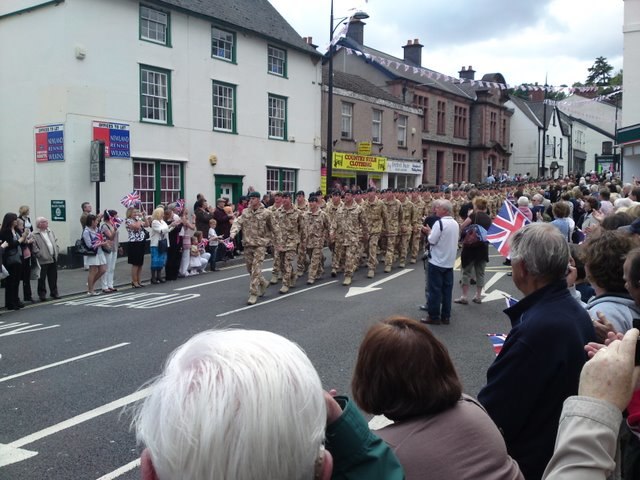The Rajputana Rifles is the oldest rifle regiment of the Indian Army. It was originally a part of the British Indian Army, when six previously existing regiments were amalgamated to form six battalions of the 6th Rajputana Rifles. In 1945, the numeral designation was dropped from the title and in 1947 the regiment was transferred to the newly independent Indian Army. Since independence, the regiment has been involved in a number of conflicts against Pakistan, as well as contributing to the Custodian Force (India) in Korea under the aegis of the United Nations in 1953–54 and to the UN Mission to the Congo in 1962. As a rifle regiment, it uses a bugle horn as its insignia, the same as the British Light Division, but unlike its British counterparts, the Rajputana Rifles march at the same march pace used in the Indian Army as a whole.
A painting depicting members of the Rajputanta Rifles, of all ranks and uniforms. c. 1911
Men of the regiment during the Battle of Meiktila, Burma 1945
President Ram Nath Kovind with members of the Band of the Rajputana Rifles following the Beating Retreat, Rashtrapati Bhavan, 30 January 2018.
Postage stamp released in 2018 to commemorate the Bicentenary of the Third Battalion of Rajputana Rifles.
A rifle regiment is a military unit consisting of a regiment of infantry troops armed with rifles and known as riflemen. While all infantry units in modern armies are typically armed with rifled weapons the term is still used to denote regiments that follow the distinct traditions that differentiated them from other infantry units.
Personnel of 1st Battalion, The Rifles on parade in Chepstow, 21 May 2009.
John Fitzgerald Kennedy, escorted by a Bermuda Militia Artillery officer in Royal Artillery blue No. 1 Dress, inspects green-uniformed riflemen of the Bermuda Rifles in 1961






